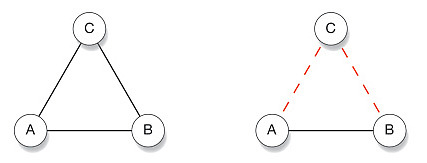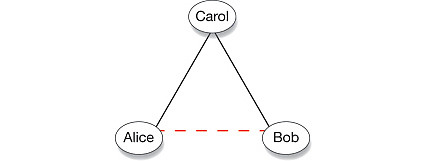 Steven Strogatz on math, from basic to baffling.
Steven Strogatz on math, from basic to baffling.
Tags:
It’s traditional to teach kids subtraction right after addition. That makes sense — the same facts about numbers get used in both, though in reverse. And the black art of “borrowing,” so crucial to successful subtraction, is only a little more baroque than that of “carrying,” its counterpart for addition. If you can cope with calculating 23 + 9, you’ll be ready for 23 – 9 soon enough.
More in This Series
- Rock Groups (Feb. 7, 2010)
- From Fish to Infinity (Jan. 31, 2010)
At a deeper level, however, subtraction raises a much more disturbing issue, one that never arises with addition. Subtraction can generate negative numbers. If I try to take 6 cookies away from you but you only have 2, I can’t do it — except in my mind, where you now have negative 4 cookies, whatever that means.
Subtraction forces us to expand our conception of what numbers are. Negative numbers are a lot more abstract than positive numbers — you can’t see negative 4 cookies and certainly can’t eat them — but you can think about them, and you have to, in all aspects of daily life, from debts and overdrafts to contending with freezing temperatures and parking garages.
Still, many of us haven’t quite made peace with negative numbers. As my colleague Andy Ruina has pointed out, people have concocted all sorts of funny little mental strategies to sidestep the dreaded negative sign. On mutual fund statements, losses (negative numbers) are printed in red or nestled in parentheses, without a negative sign to be found. The history books tell us that Julius Caesar was born in 100 B.C., not –100. The subterranean levels in a parking garage often have names like B1 and B2. Temperatures are one of the few exceptions: folks do say, especially here in Ithaca, that it’s –5 degrees outside, though even then, many prefer to say 5 below zero. There’s something about that negative sign that just looks so unpleasant, so … negative.
Perhaps the most unsettling thing is that a negative times a negative is a positive. So let me try to explain the thinking behind it.
How should we define something like –1 × 3, where we’re multiplying a negative number by a positive number? Well, just as 1 × 3 means 1 + 1 + 1, the natural definition for –1 × 3 is (–1) + (–1) + (–1), which equals –3. This should be obvious in terms of money: if you owe me $1 a week, after three weeks you’re $3 in the hole.
From there it’s a short hop to see why a negative times a negative should be a positive. Take a look at the following string of equations:
–1 × 3 = –3
–1 × 2 = –2
–1 × 1 = –1
–1 × 0 = 0
–1 × –1 = ?
Now look at the numbers on the far right and notice their orderly progression:
–3, –2, –1, 0, ?
At each step, we’re adding 1 to the number before it. So wouldn’t you agree the next number should logically be 1?
That’s one argument for why (–1) × (–1) = 1. The appeal of this definition is that it preserves the rules of ordinary arithmetic; what works for positive numbers also works for negative numbers.
But if you’re a hard-boiled pragmatist, you may be wondering if these abstractions have any parallels in the real world. Admittedly, life sometimes seems to play by different rules. In conventional morality, two wrongs don’t make a right. Likewise, double negatives don’t always amount to positives; they can make negatives more intense, as in “I can’t get no satisfaction.” (Actually, languages can be very tricky in this respect. The eminent linguistic philosopher J. L. Austin of Oxford once gave a lecture in which he asserted that there are many languages in which a double negative makes a positive, but none in which a double positive makes a negative — to which the Columbia philosopher Sidney Morgenbesser, sitting in the audience, sarcastically replied, “Yeah, yeah.”)
Still, there are plenty of cases where the real world does mirror the rules of negative numbers. When a nerve cell inhibits the firing of another that in turn inhibits a third, the indirect action of the first cell on the third is tantamount to excitation; a chain of two negatives makes a positive. Similar effects occur in gene regulation: a protein can turn a gene on by blocking another molecule that was repressing that stretch of DNA.
Perhaps the most familiar parallel occurs in the social and political realms, as summed up by the adage, “The enemy of my enemy is my friend.” This truism, and related ones about the friend of my enemy, and so on, can be depicted in relationship triangles.
The corners signify people, companies or countries, and the sides connecting them signify their relationships, which can be positive (friendly, shown here as solid lines) or negative (hostile, shown as dashed lines).

Social scientists refer to triangles like the one on the left, with all sides positive, as “balanced” — there’s no reason for anyone to change how they feel, since it’s reasonable to like your friend’s friends. Similarly, the triangle on the right, with two negatives and a positive, is considered balanced because it causes no dissonance; even though it allows for hostility, nothing cements a friendship like hating the same person.
Of course triangles can also be unbalanced. When three mutual enemies size up the situation, two of them — often the two with the least animosity — may be tempted to join forces and gang up on the third.
Even more unbalanced is a triangle with a single negative relationship. For instance, suppose Carol is friendly with both Alice and Bob, but Bob and Alice despise each other. Perhaps they were once a couple but have now suffered a nasty break-up, and each is badmouthing the other to ever-loyal Carol. This causes psychological stress all around. To restore balance, either Alice and Bob have to reconcile, or Carol has to choose a side.

Leaving aside the verisimilitude of the model, there are interesting questions here of a purely mathematical flavor. For example, in a close-knit network where everyone knows everyone, what’s the most stable state? One possibility is a nirvana of goodwill, where all relationships are positive and all triangles are balanced. But surprisingly, there are other states that are equally stable. These are states of intractable conflict, with the network split into two hostile factions. All members of a given faction are friendly with one another, but antagonistic toward everybody in the other faction. (Sound familiar?) Perhaps even more surprisingly, these polarized states are the only states as stable as nirvana. In particular, no three-party split can have all its triangles balanced.
Scholars have used these ideas, for example, to analyze the run-up to World War I. The diagram below shows the shifting alliances among Great Britain, France, Russia, Italy, Germany and Austria-Hungary between 1872 and 1907.

The first five configurations were all unbalanced, in the sense that they each contained at least one unbalanced triangle. The resultant dissonance tended to push these nations to realign themselves, triggering reverberations elsewhere in the network. In the final stage, Europe had split into two implacably opposed blocs — technically “balanced” but on the brink of war.
The point is not that this theory is powerfully predictive. It isn’t. It’s too simple to account for all the subtleties of geopolitical dynamics. The point is that some part of what we observe is due to nothing more than the primitive logic of “the enemy of my enemy,” and this part is captured perfectly by the multiplication of negative numbers. By sifting the generic from the meaningful, the arithmetic of negative numbers can help us see where the real puzzles lie.
NOTES:
For more of Sidney Morgenbesser’s witticisms and academic one-liners, see the sampling here.
Balance theory was first proposed by the social psychologist Fritz Heider, and has since been developed and applied by social network theorists, political scientists, anthropologists, mathematicians and physicists. For the original formulation, see:
F. Heider, Journal of Psychology, Vol. 21 (1946), p.107;
F. Heider, The Psychology of Interpersonal Relations (John Wiley and Sons, 1958).
For a review of balance theory from a social network perspective, see:
S. Wasserman and K. Faust, Social Network Analysis: Methods and Applications (Cambridge University Press, 1994), chapter 6.
The theorem that a balanced state in a fully connected network consists of either a nirvana of all friends, or two mutually antagonistic factions, was first proven in:
D. Cartwright and F. Harary, Psychological Review, Vol. 63 (1956), p.277.
A very readable version of that proof, and a gentle introduction to the mathematics of balance theory, has been given by two of my colleagues at Cornell:
D. Easley and J. Kleinberg, Networks, Crowds and Markets: Reasoning about a Highly Connected World (Cambridge University Press, 2010).
In much of the early work on balance theory, a triangle of three mutual enemies (and hence three negative sides) was considered unbalanced. I assumed this implicitly when quoting the results about nirvana and the two-bloc state as being the only configurations of a fully connected network in which all triangles are balanced. However, some researchers have challenged this assumption, and have explored the implications of treating a triangle of three negatives as balanced. For more on this and other generalizations of balance theory, see the books by Wasserman and Faust and by Easley and Kleinberg, cited above.
The example and graphical depiction of the shifting alliances before World War I are from:
T. Antal, P.L. Krapivsky and S. Redner, Physica D 224 (2006), p.130, available online here and here (pdf).
This paper, written by three statistical physicists, is notable for recasting balance theory in a dynamic framework, thus extending it beyond the earlier static approaches.
For the historical details of the European alliances, see:
W.L. Langer, European Alliances and Alignments, 1871-1890, 2nd ed. (Knopf, 1956);
B.E. Schmitt, Triple Alliance and Triple Entente (Henry Holt and Company, 1934).
Thanks to Carole Schiffman, Andy Ruina and Jon Kleinberg for their comments and suggestions, and to Margaret Nelson for preparing the illustrations.










